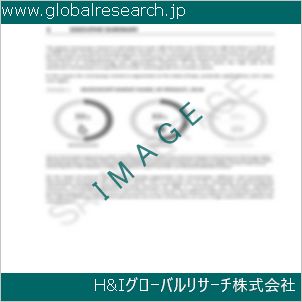1. Preface
1.1. Objectives of the Study
1.2. Market Segmentation & Coverage
1.3. Years Considered for the Study
1.4. Currency & Pricing
1.5. Language
1.6. Limitations
1.7. Assumptions
1.8. Stakeholders
2. Research Methodology
2.1. Define: Research Objective
2.2. Determine: Research Design
2.3. Prepare: Research Instrument
2.4. Collect: Data Source
2.5. Analyze: Data Interpretation
2.6. Formulate: Data Verification
2.7. Publish: Research Report
2.8. Repeat: Report Update
3. Executive Summary
4. Market Overview
4.1. Introduction
4.2. Wool Market, by Region
5. Market Insights
5.1. Market Dynamics
5.1.1. Drivers
5.1.1.1. High adoption of wool for making fashion apparel and accessories
5.1.1.2. Increasing international trade of wool and wool-based products
5.1.1.3. Government initiatives encouraging wool and wool-based product manufacturing
5.1.2. Restraints
5.1.2.1. Fluctuation in wool prices
5.1.3. Opportunities
5.1.3.1. Technological advancements in wool production activities
5.1.3.2. Emerging innovations in wool as an insulation material
5.1.4. Challenges
5.1.4.1. Availability of low-quality counterfeit products coupled with the environmental impact of wool production and processing
5.2. Market Segmentation Analysis
5.2.1. Type: Proliferating demand for natural wool due to its inherent organic properties
5.2.2. Grading: Extensive use of fine wool in luxury apparel manufacturing
5.2.3. Application: High utilization of wool in apparel & accessories applications
5.3. Market Trend Analysis
5.3.1. Growing trend towards eco-friendly products coupled with regulations related to quality standards for wool in the Americas
5.3.2. Flourishing wool production and adoption of advanced wool processing technologies in the Asia-Pacific
5.3.3. Emphasis on use of sustainable products with expanding applicability of wool in diverse end-user industries across the EMEA region
5.4. Cumulative Impact of High Inflation
5.5. Porter’s Five Forces Analysis
5.5.1. Threat of New Entrants
5.5.2. Threat of Substitutes
5.5.3. Bargaining Power of Customers
5.5.4. Bargaining Power of Suppliers
5.5.5. Industry Rivalry
5.6. Value Chain & Critical Path Analysis
5.7. Regulatory Framework
6. Wool Market, by Type
6.1. Introduction
6.2. Natural
6.3.1. Angora Wool
6.3.2. Cashmere Wool
6.3.3. Icelandic Wool
6.3.4. Merino Wool
6.3.5. Peruvian Highland Wool
6.3.6. Polwarth Wool
6.3.7. Shetland Wool
6.3.8. Teeswater Wool
6.3.9. Welsh Mountain Wool
6.3. Synthetic
7. Wool Market, by Grading
7.1. Introduction
7.2. Coarse Wool (≥ 35 µ)
7.3. Fine Wool (≤ 25 µ)
7.4. Medium Wool (25 to 35 μ)
8. Wool Market, by Application
8.1. Introduction
8.2. Apparels & Accessories
8.3. Building Material
8.4. Interior Textiles
9. Americas Wool Market
9.1. Introduction
9.2. Argentina
9.3. Brazil
9.4. Canada
9.5. Mexico
9.6. Peru
9.7. United States
10. Asia-Pacific Wool Market
10.1. Introduction
10.2. Australia
10.3. China
10.4. India
10.5. Indonesia
10.6. Japan
10.7. Malaysia
10.8. New Zealand
10.9. Philippines
10.10. Singapore
10.11. South Korea
10.12. Taiwan
10.13. Thailand
10.14. Vietnam
11. Europe, Middle East & Africa Wool Market
11.1. Introduction
11.2. Denmark
11.3. Egypt
11.4. Finland
11.5. France
11.6. Germany
11.7. Iran
11.8. Ireland
11.9. Israel
11.10. Italy
11.11. Netherlands
11.12. Nigeria
11.13. Norway
11.14. Poland
11.15. Portugal
11.16. Qatar
11.17. Russia
11.18. Saudi Arabia
11.19. South Africa
11.20. Spain
11.21. Sweden
11.22. Switzerland
11.23. Turkey
11.24. United Arab Emirates
11.25. United Kingdom
12. Competitive Landscape
12.1. FPNV Positioning Matrix
12.2. Market Share Analysis, By Key Player
12.3. Competitive Scenario Analysis, By Key Player
12.3.1. Merger & Acquisition
12.3.1.1. Lion Brand Yarn Co. Acquires Premium Hand Knitting Yarn Company Quince & Co.
12.3.2. Agreement, Collaboration, & Partnership
12.3.2.1. KARL MAYER and Südwolle Explore Possibilities of Merino Wool for Warp Knitting Technology
12.3.2.2. Chanel and Brunello Cucinelli to Take Stake in Italian Yarn Manufacturer
12.3.2.3. Nepal, Mongolia sign wool agreement
12.3.3. New Product Launch & Enhancement
12.3.3.1. Ferney Spinning Mills launches Otenya, a new yarn collection made from Spiber’s Brewed Protein(TM) fibers
12.3.3.2. Merino Moments-BUFF launches 100% sustainable eco fabric Merino wool range
12.3.3.3. Varanasi Weavers Launch Locally-Woven Pashmina
12.3.4. Investment & Funding
12.3.4.1. PETA Launches USD 1 Million ‘Vegan Wool’ Prize
12.3.5. Award, Recognition, & Expansion
12.3.5.1. Pioneer Embroideries’ Strategic Expansion and Sustainability Initiatives
12.3.5.2. Frankenmuth Woolen Mill completes USD 2 million expansion as demand for its natural products grows
12.3.5.3. AWN to take Largest Holding In The New Zealand Merino Co.
13. Competitive Portfolio
13.1. Key Company Profiles
13.1.1. AJ & PA McBride Ltd
13.1.2. Australian Wool Innovation Limited by The Woolmark Company Pty Ltd
13.1.3. Baur Vliesstoffe GmbH
13.1.4. Bendigo Woollen Mills Pty Ltd
13.1.5. Bobolink Yarns
13.1.6. Botto Giuseppe SpA
13.1.7. British Wool Marketing Board (BWMB)
13.1.8. Brown Sheep Company, Inc.
13.1.9. Cape Wools SA
13.1.10. Catskill Merino
13.1.11. Cestari Sheep & Wool Company
13.1.12. Chargeurs PCC
13.1.13. Donegal Yarns Limited
13.1.14. Duckworth
13.1.15. Europa Wools Ltd.
13.1.16. G. Schneider S.p.A.
13.1.17. Great Lakes Fibers
13.1.18. Indorama Ventures Public Company Limited
13.1.19. Kaplanlar Tekstil San. Ve Tic. A.Ş.
13.1.20. Kentwool Co.
13.1.21. Kerry Woollen Mills
13.1.22. Lanas Trinidad S.A.
13.1.23. Laxtons Limited
13.1.24. Merinotex
13.1.25. Minwool Rock Fibre Limited
13.1.26. Nui Organics
13.1.27. Salud Industry (Dongguan) Co., Ltd.
13.1.28. Shaniko Wool Company
13.1.29. Südwolle Group GmbH
13.1.30. The New Zealand Merino Company Ltd
13.1.31. Valley Fibers Corporation
13.1.32. Wool & Company
13.1.33. Woolyarns Limited
13.1.34. Yünsa A.S.
13.1.35. Zeilinger Wool Co.
13.1.36. Zhejiang Xinao Textile Co., Ltd.
13.2. Key Product Portfolio
14. Appendix
14.1. Discussion Guide
14.2. License & Pricing
❖ 免責事項 ❖
http://www.globalresearch.jp/disclaimer

-gr.jpg)










